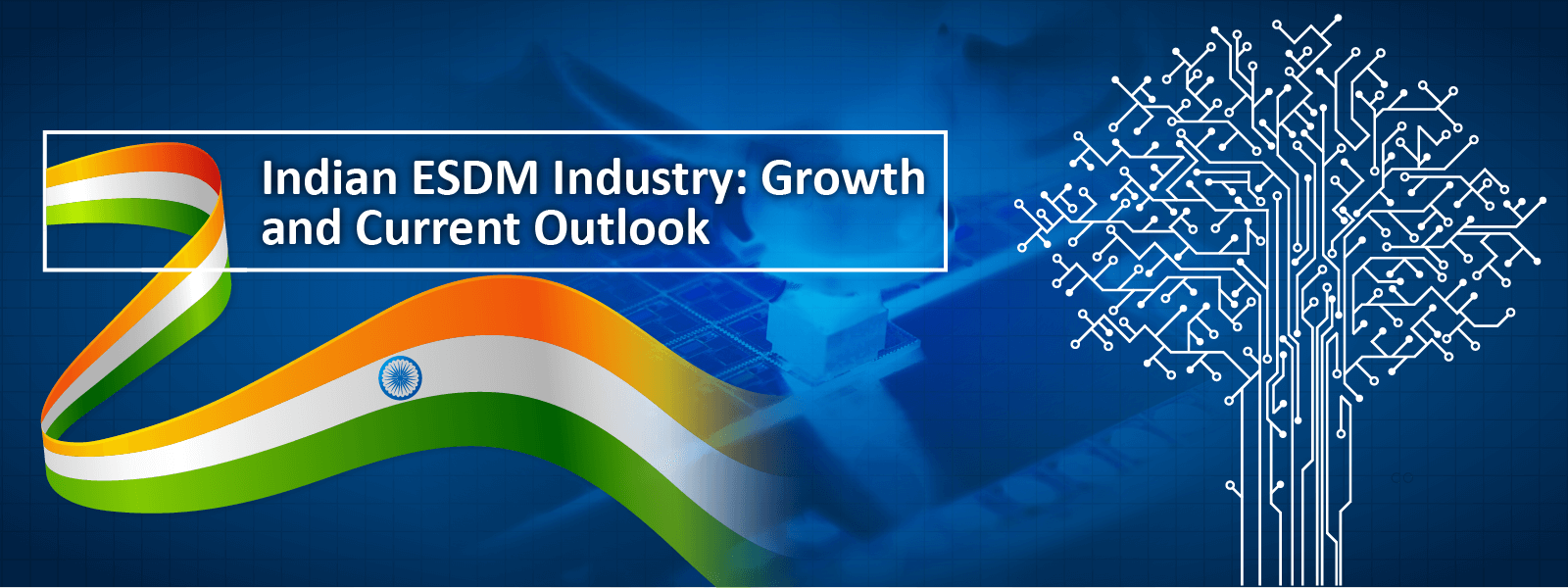Indian ESDM Industry: Growth and Current Outlook
India has been one of the frontrunners among all emerging nations, from the economic development perspective. Post descending trend of GDP growth in 2010 – 2012, the Indian economy has returned to track and is forecasted to grow at 7+% Year-on-Year till 2020. A major portion of the credit for the upward movement of the GDP growth can be given to the growth in the electronics industry. The growth is primarily driven by the increasing domestic demand for electronic products. A multitude of factors are responsible for the increase in demand including rising income of people, growing middle class population, broadband connectivity to villages, favourable duty structure, rural electrification and Govt’s e-governance programs.
Favourable Electronics System Design & Manufacturing (ESDM) policies and initiatives by the Govt such as Preference for Domestically Manufactured Electronic Goods (PMA), Modified Special Incentive Package Scheme (M-SIPS) and Electronics Development Fund (EDF) along with rising interestofIndian enterprises and MNCs in the electronics sector have put massive positive impact on ESDM valuechain. In addition, 100% FDI has been allowed for this sector. The M-SIPS scheme aims toachieve ‘Net Zero Imports’ in the industry by 2020. The demand forelectronic componentshas also witnessed an upward trend as several foreign manufacturers like Foxconnare setting up retail units in India and local players, especiallymobile phone traders are shifting to manufacturing. Government of India has projected that the Indian ESDM market would reach USD 400 billion by 2020.
Indian ESDM sector consists of the following segments:
- Electronic components manufacturing
- Semiconductor design and manufacturing
- IT systems and hardware
- Telecom products and equipment
- Consumer electronics
- Strategic electronics
These segments include hardware design, software design, intellectual property rights (IPR), and manufacture of final products.
Growth Drivers at a Glance
- Consumer appliances, automotive, industrial and strategic electronics applications, telecom equipment including mobile devices.
- The significant growth achieved in the production of smartphones, accessories,LED lights and LED TVs and some other electronic components.
- Declining electronics prices and increased adoption of high-end technology devices.
- Technology transitions like the rollout of 4G/LTE networks, IoT and AI.
- Increased demand for IoT pushed by initiatives like ‘Digital India’ and ‘Smart City.’
- Digital banking systems like payment banks and wallet players.
- Electric vehicles and mobility related applications connected to them.
Conclusion
However, despite the significant growth of the industry, the ‘Net Zero Electronics Imports by 2020’ seems a distant dream, with imports still forming a huge part of the Indian ESDM ecosystem.
With technologies changing tirelessly, especially in the sphere of manufacturing, the Indian Government and the ESDM players have a lot to do to bring it to reality.
